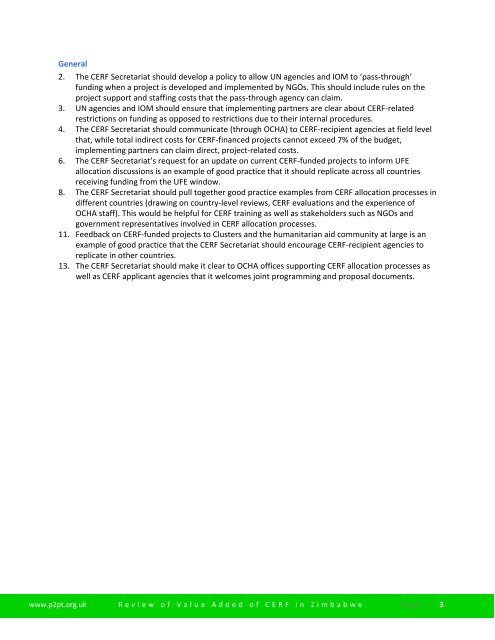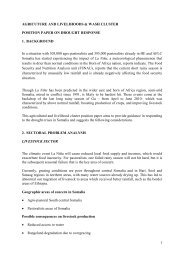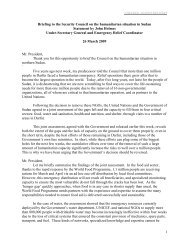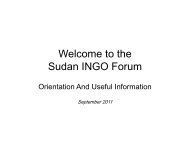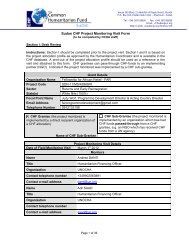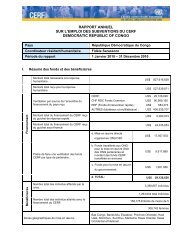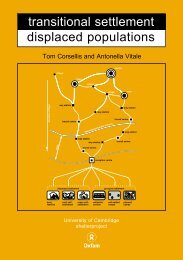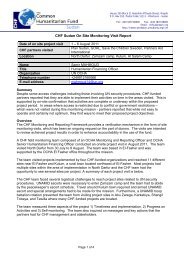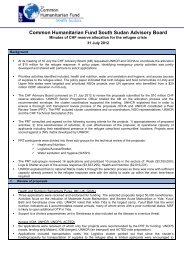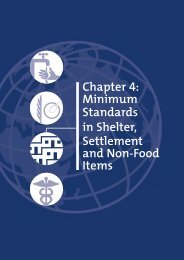in Zimbabwe - OCHANet
in Zimbabwe - OCHANet
in Zimbabwe - OCHANet
Create successful ePaper yourself
Turn your PDF publications into a flip-book with our unique Google optimized e-Paper software.
General<br />
2. The CERF Secretariat should develop a policy to allow UN agencies and IOM to ‘pass‐through’<br />
fund<strong>in</strong>g when a project is developed and implemented by NGOs. This should <strong>in</strong>clude rules on the<br />
project support and staff<strong>in</strong>g costs that the pass‐through agency can claim.<br />
3. UN agencies and IOM should ensure that implement<strong>in</strong>g partners are clear about CERF‐related<br />
restrictions on fund<strong>in</strong>g as opposed to restrictions due to their <strong>in</strong>ternal procedures.<br />
4. The CERF Secretariat should communicate (through OCHA) to CERF‐recipient agencies at field level<br />
that, while total <strong>in</strong>direct costs for CERF‐f<strong>in</strong>anced projects cannot exceed 7% of the budget,<br />
implement<strong>in</strong>g partners can claim direct, project‐related costs.<br />
6. The CERF Secretariat’s request for an update on current CERF‐funded projects to <strong>in</strong>form UFE<br />
allocation discussions is an example of good practice that it should replicate across all countries<br />
receiv<strong>in</strong>g fund<strong>in</strong>g from the UFE w<strong>in</strong>dow.<br />
8. The CERF Secretariat should pull together good practice examples from CERF allocation processes <strong>in</strong><br />
different countries (draw<strong>in</strong>g on country‐level reviews, CERF evaluations and the experience of<br />
OCHA staff). This would be helpful for CERF tra<strong>in</strong><strong>in</strong>g as well as stakeholders such as NGOs and<br />
government representatives <strong>in</strong>volved <strong>in</strong> CERF allocation processes.<br />
11. Feedback on CERF‐funded projects to Clusters and the humanitarian aid community at large is an<br />
example of good practice that the CERF Secretariat should encourage CERF‐recipient agencies to<br />
replicate <strong>in</strong> other countries.<br />
13. The CERF Secretariat should make it clear to OCHA offices support<strong>in</strong>g CERF allocation processes as<br />
well as CERF applicant agencies that it welcomes jo<strong>in</strong>t programm<strong>in</strong>g and proposal documents.<br />
www.p2pt.org.uk Review of Value Added of CERF <strong>in</strong> <strong>Zimbabwe</strong> Page | 3


